
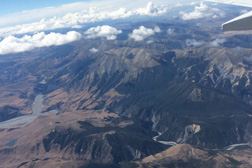
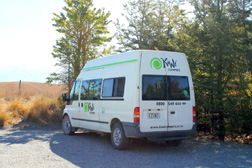
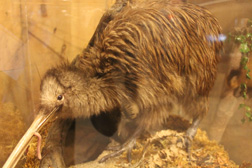
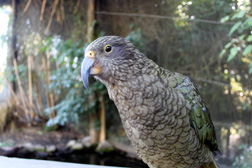

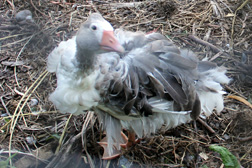
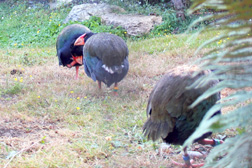
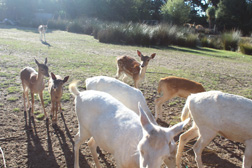
 | ||
|---|---|---|
 | After I got a little de-jetlagged and introduced to the UQ St. Lucia campus, Pegah and I started our trip to the rugged landscape that is New Zealand South Island. Our first stop after landing at Christchurch was to pick up our home for the next two weeks from Kiwi Campers. I had arranged with Touring New Zealand for an old but serviceable Ford Transit campervan, but this one was just old. We weren't a mile from the rental office when the unsecured natural gas bottle fell out of its improperly locked compartment and the broken driver's door swung open, taking out the outside rear view mirror that been already been broken by a previous unlucky client. Little did we know what other calamities lay in store. |  |
 | Our next stop was the Willowbank wildlife preserve in Christchurch. Having arrived in the land of the kiwis, we wanted to see some. They are flightless birds that evolved in New Zealand to fill the ecological niche occupied by similarly sized mammals elsewhere. This is a stuffed one in a glass case, which is the only way you can photograph them because they are nocturnal and don't like flash cameras. Once inside their darkened enclosure, however, we saw several of them digging around in the undergrowth, searching for worms. We also saw a number of more conventional birds, including this kea, a small mountain-dwelling, highly intelligent parrot with remarkable curiosity, as Pegah found out. |  |
 | While the kea was cunningly posing for a closeup, Pegah moved in, clutching not only her camera but also her Willowbank map. The Kea obviously wanted the map, and when Pegah got close enough, the bird grabbed it, jerked it out of her hand, and flew just out of reach. Keas are known to use tools and cooperate in achieving a common goal. Here this one and two of his friends are reading all about the keas at the Willowbank zoo. Later they got in a fight and tore the map to bits, apparently to use it for brightly colored nesting material. Pegah decided to find a photographic subject with a little less chutzpah! She took a picture of this goose, that was obviously having a bad hair day. |  |
 | On the left is a group of very rare Takahe. They are the largest species of rail in the world, found only in New Zealand. They weigh up to 6.6 pounds and can stand two feet high at full stretch. Having evolved with no predators, they have lost the ability to fly. They were believed to be extinct until their rediscovery in 1948 by Dr. Geoffrey Orbell near Lake Te Anau. The last remaining 200-300 wild takahe live in tussock and beech valleys in Fiorland's Murchison mountains. Captive young takahe are fed with puppets so they do not become attached to humans. We also saw some deer, which compete with the takahe for food. Deer are ubiquitous in New Zealand and definitely not in danger of extinction. |  |
| Click here to go to the next page. | ||